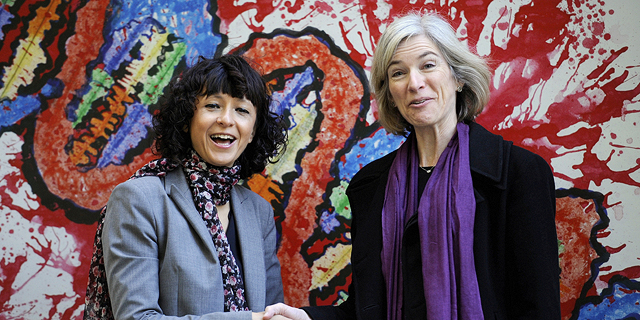
Opinion
Nobel Prize for CRISPR inventors re-sparks the debate on science’s ethical boundaries
The purported facility of the DNA-editing process raises numerous questions and concerns over the control and regulation of the technology
The Nobel Prize in Chemistry was awarded earlier this week to Emmanuelle Charpentier and Jennifer Doudna for their role in developing the now ubiquitous CRISPR technology used to edit the DNA of animals, plants, and microorganisms.
This was the first time two women were jointly awarded the Nobel Prize in Chemistry, and at least the second time, Feng Zhang of the Broad Institute in Cambridge Massachusetts seems to have been snubbed when it comes to a major scientific award.
CRISPR is a crowded field, with competing claims on discovery that triggered a long-standing patent dispute that still continues between the prize winners and a team led by Feng Zhang of the Broad Institute of MIT and Harvard.
Even though Zhang was awarded a key patent related to the use of the technology on higher order organisms, like people, and not just on yogurt bacteria, he will not share in the Nobel Prize or the generous check that goes with it.
It is unclear if this decision by the Nobel committee is reflective of earlier decisions by various patent offices to effectively crown Doudna’s University of California Berkeley, the winner in the CRISPR patent battle over the Broad Institute, as we have described elsewhere. Or perhaps, the Nobel Prize committee felt that the prize ought to go to the early inventors of the technology, not the subsequent innovating tinkerers that made the technology more commercially viable.
Although less than a decade old, CRISPR technology, with hundreds of academic publications and even more research projects touting its usefulness, has become so widespread in the industry and in academia, that kits for conducting at-home CRISPR experiments are even available to purchase on Amazon. Although, to be fair, one can also purchase uranium on Amazon.
CRISPR, which has already had its share of notoriety, is clearly a multipurpose tool that can advance genetic engineering and gene therapies. It has been described as a tool that can cut and paste genomic material like one might edit a text in a word processing program.
Related Stories
The purported facility of the process, however, raises numerous questions and concerns over the control and regulation of the technology.
Consider Josh Zayner, a young biohacker who publicly injected himself with a CRISPR concoction in the hopes of treating herpes. It didn’t work but his attempt highlights the concerns regarding the misuse and abuse of the technology for less than scientific purposes. The technology is even part of popular culture, making an appearance for example in the new Netflix show,Biohackers.
Around a year ago, scientists began experimenting with editing sperm genetic material with CRISPR. If biohackers start doing this, they could potentially do so to hide the seemingly rampant fraudulent misrepresentation in the fertility industry. Every day there seems to be a new story of a fertility doctor using his own sperm in lieu of a parent or donor to create an embryo for in-vitro fertilization, or a new lawsuit claiming that a sperm donor misrepresented his medical history, resulting in disabled donor-conceived children. Or, what if a donor wanted to father 150 children, but didn’t want that traced back to him, a la Vince Vaughn in the film Delivery Man.
Could that malicious individual hide his identity by using CRISPR technology on his gametes so that the child could not be traced back to him via standard paternity testing? While we are likely still far off from such an abuse of the technology, it is definitely within the range of possibility.
And if it’s conceivable, is it ethical? Consider the conventional wisdom that finds less fault in gene therapy compared to genetic enhancement. Does this CRISPR manipulation simply to mask identity count as a therapy, an enhancement, or neither? Consider also that conventional wisdom finds less fault in somatic cell gene therapy, compared to germline gene therapy; somatic cell gene therapy is not passed down to the next generation, it dies with the patient, whereas genetic manipulation to the germline gets passed down from generation to generation. Most would find this sort of manipulation of genetic information in sperm viscerally abhorrent, even if it was simply an effort for a sperm donor to arguably legitimately, without any malicious intent, mask his identity in a world where it is increasingly becoming impossible to be an anonymous sperm donor. At the same time, there are many daily activities that can affect the health and the genetics of sperm without resorting to DNA-editing.
So what’s the difference? No one would fault a deaf couple for wanting to conceive a child, even if that child might end up deaf too, and yet there was an outcry when a lesbian couple specifically sought out a donor to allow them to conceive a deaf child through in vitro fertilization.
Consider a distinction between ownership and custodianship. As a society, we grant our members ownership over the procreative aspects of their bodies. Western society (no longer) tells people who they can procreate with or how many children they can have. At the same time, we grant that membership only custodial rights over our respective genomes: genomes are a collective inheritance, like a good watch, we don’t actually own it, we “merely look after it for the next generation.”
So while as a society people are free to make uniquely different children of all stripes, representing natural genetic recombination through the procreative process, as a society, we are not yet willing to allow people to overstep our custodial metes and bounds and manipulate genomes, even if it is through Nobel Prize-winning technology like CRISPR.
Prof. Dov Greenbaum is the director of the Zvi Meitar Institute for Legal Implications of Emerging Technologies at the Harry Radzyner Law School, at IDC Herzliya
